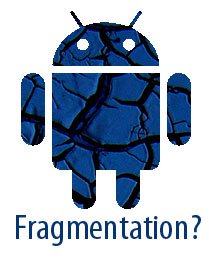Motorola exec says hardware plays large role in slowing Android updates

When a handset is slow to get the latest version of Android, annoyed consumers are quick to point the finger at the custom user interfaces that companies like Samsung, Motorola, and HTC deploy on their devices. The fact that this custom software is often deemed clunky, superfluous, or differentiation for differentiation’s sake doesn’t help quiet the accusations. According to one Motorola executive, however, this simply isn’t the case.
Motorola’s senior vice president and general manager of Enterprise Business Christy Wyatt says hardware plays as large a role as, if not a greater one than, software customizations in slowing down the Android update process. Her explanation is simple enough. Google builds each new version of Android based on a the hardware of a specific “Halo” device. For Android 4.0, this is the Galaxy Nexus. The source code released to manufacturers and developers is based around the software built for this specific device. When an older handset (or new one, for that matter) utilizes a different processor, different cellular radios, or any number of specification configurations that don’t align with the Galaxy Nexus, changes must be made in that source code.
The issue is compounded by an overabundance of Android phones needing updates and the often extensive software approval process of carriers. While the latter is likely to change no time soon, manufacturers have expressed a need to release fewer handset in 2012 and instead focus on creating a handful of excellent devices. With less phones to worry about, Motorola’s software team can devote more time to preparing updates for their Android lineup.
Wyatt’s words wont do much to help your phone receive its Android update any sooner, but it does help to point out that the manufacturer and carrier aren’t solely to blame. The way Google handles its Android source code releases plays a large part in how quickly updates can be delivered.
[via Droid Dog]
